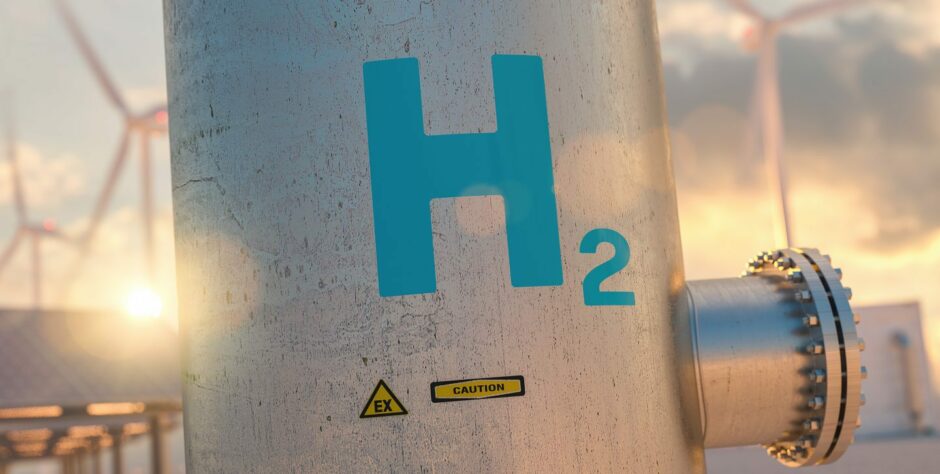
Green hydrogen start-up Electrogenos has unveiled new efficiency figures and a 25% cost reduction for its electrolyser technology as it seeks investors to continue its ambitious growth plans.
Electrogenos has developed a proprietary catalyst and unique manufacturing process it says drastically cuts electrolyser costs and reduces factory deployment times.
The Oxford-based company, with a subsidiary in Aberdeen, is aiming to bring its green hydrogen production costs below the $1 per kg benchmark and achieve commercialisation by 2025.
Green hydrogen production currently costs around $4 to $6 per kg, according to figures from the International Renewable Energy Agency, remaining too expensive for most European companies.
The market for green hydrogen is expected to grow significantly in the coming decades.
Research by Deloitte shows projected demand for green hydrogen from transport, industrial and chemical sectors is estimated to expand the market to US$1.65 trillion by 2050.
Electrogenos breakthrough
Announcing several breakthroughs in its technology, Electrogenos said its electrolyser stacks are projected to cost around 25% of current market alternatives.
Meanwhile, the company said its electrolyser stack factories unlock economies of scale
at a 200MW output capacity.
By diverging from the centralised gigawatt model, Electrogenos said it aims to solve the two-year backlog issue currently facing the green hydrogen industry.
Electrogenos chief executive officer Augusto Bartolome said figures showing 98%
of hydrogen production in the United States still relies on fossil fuels demonstrated the global challenge facing the industry.
“At Electrogenos, we’re not just innovating for innovation’s sake,” he said.
“We are on a mission to pivot this industry towards a green, sustainable future.
“Our recent breakthroughs aren’t just numbers on a page—they signify a profound shift in how the world can access cleaner energy.”
Electrolyser performance results
Electrogenos said its electrodes match competitors’ current densities at less than 1.7V, representing an 89% voltage efficiency.
Meanwhile at 1.8V, the electrodes achieve current densities that surpass 8000A/m2, the 2030 target set by the IRENA report in 2020.
In addition, the company said that under aggressive accelerated degradation tests over hundreds of hours, the electrodes show less than 3% degradation.
Electrogenos said this showed promising steady performance in dynamic operation when coupled with renewable energy sources.
Further testing showed additional cost reduction potential from using stainless steel for the balance of the plant, as the electrodes displayed resistance to Chromium (Cr) and Iron(Fe) poisoning.
In addition, the catalyst is produced through a room temperature soft-tooling technique, allowing a continuous, fully automated factory operation and facilitating scalability.
‘Ambitious’ green hydrogen roadmap
As part of its growth plans, Electrogenos said it has charted an “ambitious roadmap” for the business.
By early 2024, the company said its current cell and stack testing programme in its Oxfordshire research and development facility will be complete.
From there, Electrogenos will initiate plans for a pilot manufacturing plant, laying the foundation for its primary objective of achieving commercialisation by 2025 with a megawatt-scale electrolyser stack offering.
Electrogenos said it is currently seeking investors as it raises funds for its second seed round.
 © Supplied by Electrogenos
© Supplied by Electrogenos